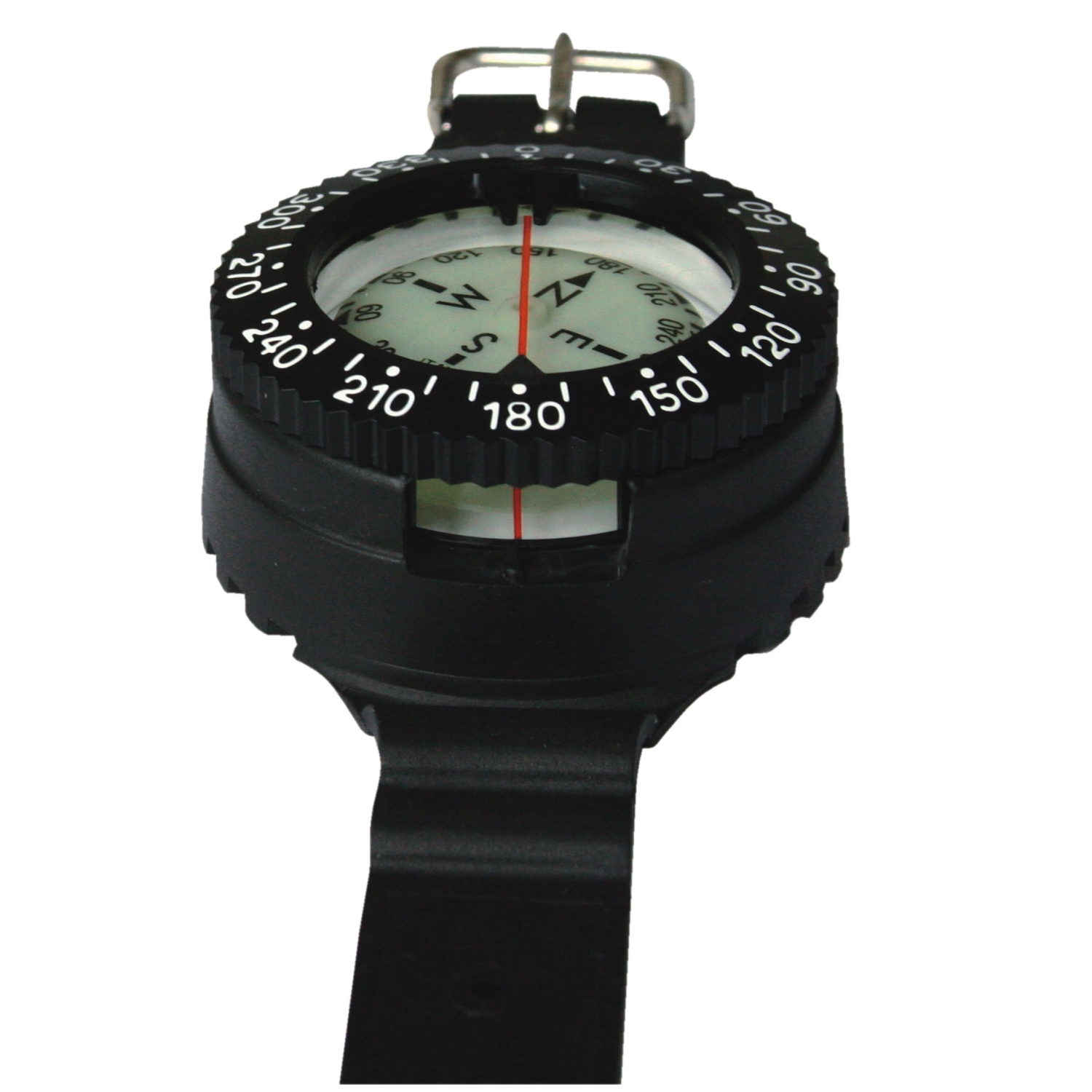In diving, orienteering skills are always needed while underwater, and a navigation compass will help you navigate. An underwater compass is a magnetic compass. The main components of the compass are the compass box, the compass disc with a scale from 0 ° to 360 ° and a magnetized dart, which, when rotated freely, affects the north-south position of the Earth's magnetic field dart.
The compass helps you know the direction you are going, which is useful because you are in an underwater environment where your sense of direction works differently underwater. To learn how to use the compass properly, you need to go "PADI Underwater Navigation” – Underwater navigation a training course in which you will learn how to use the compass correctly and learn to find your way to the desired point.
The compass is an integral part of the equipment, both when you go diving in a not very well-known place, or in known diving places, crossing larger images underwater. A mechanical compass is definitely needed for the best underwater orienteering - it will help you get to your destination most accurately and efficiently. In addition to the compass, experienced divers also use the visibility of the sun and light on the ground.
The compass is also useful on the surface of water, in poor visibility conditions such as fog or at night. The diving compass is filled with liquid so that the compass needle does not compress and can point in any depth. The fluid in the compass helps stabilize the compass needle.
Underwater orienteering with a compass is different from orienteering on land, it must be remembered that effective underwater orientation can be if the diver has good buoyancy. Orienteering improved with experience and over time the diver is able to get exactly to the intended place.
What, then, should be an underwater compass for use in diving? The compass for scuba diving has the following parameters:
* Liquid filling. Because the liquid is not compressed, the compass will not respond to the pressure. And compared to a conventional compass, the arrow will move much slower and smoother.
* Free arrow mounting. This allows you to get the necessary measurements even if there are small horizontal shifts in the compass position.
* Numbered degree scale.
* Luminescent compass parts. Underwater in situations where there is insufficient lighting, the luminescent parts of the compass (arrow and degree scale) will greatly facilitate its use. Divers usually put a compass on their hand or it is attached to a diving console.
When underwater with a compass, it is placed on the left hand. The right arm is stretched forward, but with the left hand the scuba diver grabs himself behind the right arm joint. This creates the correct position. If the compass is at the console while swimming, then hold the console with both hands so that the compass is as if in the middle, on the same axis as your body. Remember that the accuracy of the readings will largely depend on how correctly you hold the compass.
Order a compass and other diving or freediving equipment by e-mail or WhatsApp
- Order your diving equipment by writing to e-mail info (at) daivings.lv, WhatsApp 22077202.
- We recommend that you always order a suit and equipment from a PADI instructor or choose an authorized center to receive the most appropriate and high-quality diving equipment with a guarantee.
- Diving equipment, including a neoprene suit, compressed air balloons, a breathing regulator and a life jacket, requires annual maintenance.

